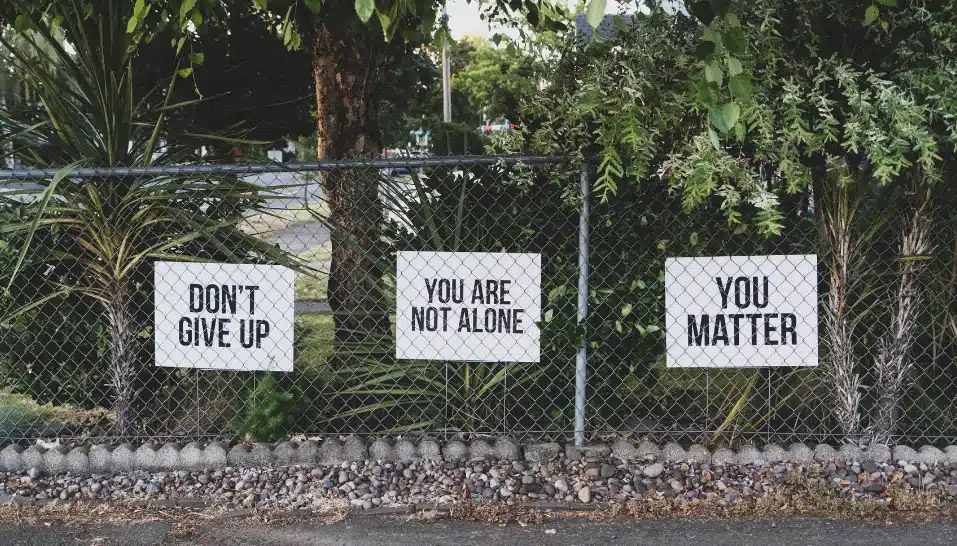World Suicide Prevention Day is observed on September 10 every year to promote worldwide awareness. Although the suicide rate has seen a downward trend in India, the increasing population means that the number of suicides has continually risen.
A country of 1.35 billion has lost nearly 140,000 to suicides. This is the tip of the iceberg. A conservative estimate suggests that for every suicide, there are over 20 attempts to take one’s own life – adding up to nearly three million attempts in India, every year.
India’s National Crime Records Bureau (NCRB) publishes yearly reports on suicides in the country. The report published in 2020, based on 2019 data, shows an increase in the number of suicide cases in the country from 9.9 per 100,000 population in 2017 to 10.4 per 100,000 population in 2019.
Over the last two decades, the rate has seen a general downward trend, but the country’s increasing population means that the number of suicides has continually risen.
The World Health Organization (WHO) numbers present an astonishing margin of difference by which NCRB data falls short and on a consistent basis. For the year 2005, the WHO estimate for India’s suicide rate (per 100,000 population) was 17.6, while the NCRB reported 10.3.
The Global Burden of Diseases, Injuries, and Risk Factors Study (GBD) estimated that there were 230,314 suicide deaths in India in 2016, contrasting with the 131,008 reported by the NCRB.
One reason for the estimates being higher is the difference in methodologies used in the surveys and their sources. Nevertheless, the fact that NCRB’s report is purely based on numbers reported to the police makes it highly sensitive to underreporting. A small district hospital, where a suicide victim is brought dead, often chooses not to report it as suicide, to avoid the bureaucratic and legal hassles of police involvements. Societal pressures and social stigma also come in the way of factual reporting.
What lies beneath?
Losing someone is unimaginably tough. Losing them to suicide is profound. Questions are raised, as they should be, on what went wrong. What signs did we miss? What pushed them to take their own life? As unfortunate as it may sound, retrospectively assessing a suicide does not make things better for the deceased or their family. But a stronger sense of awareness can enable us to read situations better, to help those in need so that they do not push themselves to the same fate.
Behind each suicide and each attempt is a long-term struggle of the person, as well as experiences of trauma and distress. The human psyche has a response to cumulative stress that fuels suicidal thoughts. The person with such thoughts may attempt to reach out or share such thoughts with friends, families, or close confidantes.
A study conducted by The National Institute of Mental Health and Neuro-Sciences (NIMHANS) on suicides among individuals aged 18-40 years found out that over two-thirds of the victims had reached out for some sort of medical health in the month preceding their suicide. Unfortunately, the early signs seem to have been ignored, or inappropriately dealt with.
“The problem is with us. We are not sensitive enough, in our clinics or amongst our friends and families,” asserts Dr. Debanjan Banerjee, a psychiatrist at NIMHANS, who was part of the team that conducted the study.
Be the change
Through the National Mental Health Act of 2017, attempted suicides have been decriminalised, and Section 309 of the Indian Penal Code declared void. Any person, irrespective of age, gender, or socioeconomic background, can act as a gatekeeper to help someone who is contemplating suicide. The most ideal time for intervention is before the idea turns into an intent. Spotting signs early is therefore extremely vital.
Certain high-risk groups are more likely to fall prey to their conditions. These include people who have already attempted but failed to take their own lives. Guilt and stigma after an unsuccessful attempt pushes them further.
In a susceptible society, media’s sensitivity, or lack thereof, often plays a major role in presenting a rosy picture around suicides and its victims – idolising the person who decided to ‘escape’ life. Cultural romanticisation has dangerous tendencies to encourage copycat suicides, also known as the Werther effect.
There is an urgent need to destigmatise the idea of seeking help. Labelling people as weak, escapists or cowards does no good. When a person feels the absence of support, they may see suicide as the only option – not because they do not want to live anymore, but due to dire desperation at that point in time.
Suicides can be prevented, provided there are no taboos about discussing issues and seeking help at the right time. We need to be more vigilant and accommodating. And we could save countless lives.

















